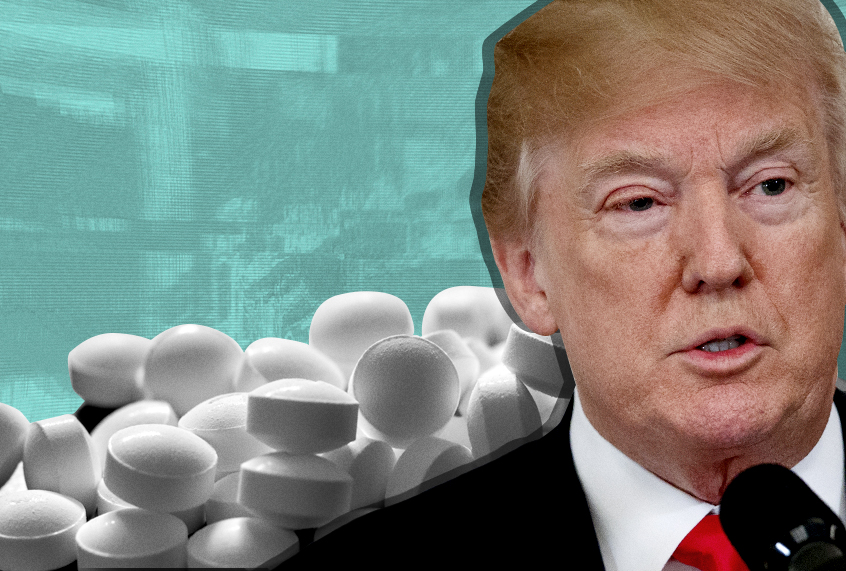The two fevers gripping the land — opioid addiction and support for Donald Trump — are related. A new study from University of Texas researchers finds that counties with the highest opioid prescription rates were also more likely to favor Trump in the 2016 election.
The study was published Friday in JAMA Network Open. The cross-sectional analysis examined data from the Census Bureau, Medicare Part D, and uselectionatlas.org to try to understand what has been deemed the “Oxy electorate.”
Focusing on legally available prescription pain relievers, like oxycodone and hydrocodone, codeine and morphine, but not illegal substances like heroin, the study examined Medicare Part D records for some 3.7 million people in 3,128 of the 3,142 counties in the U.S. Researchers designated people who had received at least one 90-day supply of prescription opioids as “high opioid users.”
Some 693 counties, typically with populations smaller than one million, had rates of opioid prescribing that were significantly higher than the national mean. Another 638 counties were identified as having significantly lower than average opioid use.
In those high opioid use counties, Trump won 59.96% of the vote. In the low opioid use counties, he won only 38.7% of the vote. (Trump won 45.92% of the overall vote.)
Those counties with both high opioid use and high Trump support were largely in the South, Midwest, and southern Appalachia.
The researchers found that the link between opioid use rates and Trump support was as strong as the link between other commonly cited socioeconomic factors — such as unemployment, household income, and education levels—and support for Trump. In the high opioid use counties, those other indicators also suggested high levels of social distress. Those counties had higher unemployment rates, fewer adults with a high school diploma, and lower household median incomes than the country as a whole.
Does that mean Trump got the opioid addict vote? No.
“With an ecological analysis you can’t say that. And not only can’t you say it, but it’s probably not true,” said lead author Dr. James Goodwin, chair of geriatric medicine at the UT Medical Branch in Galveston. “If you’re stoned out on opioids, you’re probably not voting,” he told Dallas News.
Instead, he and others suggested, high levels of opioid use tend to correlate with those other indicators of social distress, exacerbating feelings of being left behind or disenfranchised and making voters more likely to support candidates promising to shake things up.
“Trump tapped into something in that segment of voters,” said Katharine Neill Harris, a drug policy fellow at the Baker Institute, a nonpartisan think tank of Rice University in Houston. “It’s about more than just prescriptions. “This is a very complex relationship, and representative of a deeper problem . . . of problems we are not addressing as a society,” she told Dallas News.

